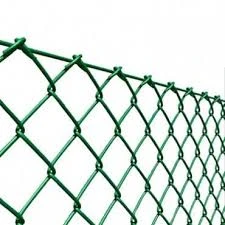Understanding Corner Chain Link Fence Post A Comprehensive Guide
When it comes to securing your property or creating defined boundaries, installing a chain link fence is a popular choice. Among the many components that make up a chain link fence, the corner chain link fence post plays a crucial role. This article delves into the importance, installation, and maintenance of corner chain link fence posts.
The Importance of Corner Posts
Corner posts are essential in any fencing project as they provide stability and strength to the fence structure. They are specifically designed to withstand the tension of the chain link fabric that stretches between them. Unlike line posts, which are used for straight runs of fencing, corner posts are positioned at the points where the fence changes direction. This could be a 90-degree turn, or even angles more complex than that.
Choosing the right corner post material is vital for ensuring the longevity and durability of your fence. Most corner chain link fence posts are made from galvanized steel or aluminum, both of which resist rust and corrosion. The diameter of these posts may vary, but a common size is 2.375 inches for residential use, while larger diameters may be required for commercial applications.
Installation Process
Installing corner posts is an important step in the overall fence installation process. Here is a step-by-step guide to help you along the way
1. Planning and Marking Before you begin, plan the layout of your fence. Use stakes and string to mark the positions of the corner posts. Ensure that the angle is accurately measured to avoid issues later on.
2. Digging the Holes Corner posts require deeper holes than line posts due to the stress they endure. A standard depth is about 2 to 3 feet, depending on your local frost line and the height of the fence.
corner chain link fence post

3. Setting the Posts Place the corner posts into the prepared holes, ensuring they are vertical using a level. If necessary, brace them to maintain their position while you fill the holes.
4. Filling the Holes Fill the holes with concrete or gravel to secure the posts in place. It's advisable to use concrete for better stability, allowing it to cure for a few days before proceeding with the installation of the chain link fabric.
5. Attaching the Chain Link Fabric Once the posts are firmly set, you can begin to attach the chain link fabric. Use tension bands and braces to connect the fabric to the corner posts, ensuring it’s taut and secure.
Maintenance and Care
To ensure your chain link fence remains in good condition over time, regular maintenance of the corner posts is necessary. Inspect the posts periodically for any signs of rust or damage. If the posts are galvanized, they should withstand the elements quite well. However, if you notice any peeling paint or rust, consider touch-ups with rust-resistant paint or a protective coating.
Additionally, check the tension on the fabric occasionally. Over time, environmental factors can cause the fence to sag. Adjusting the tension and ensuring the posts remain secure will prolong the life of your fence.
Conclusion
In summary, corner chain link fence posts are integral to the structural integrity of your fencing system. By understanding their function, installation, and maintenance, property owners can create a durable, secure boundary that meets their needs. Whether you are fencing for security, privacy, or aesthetic appeal, investing time and effort into proper installation will pay off in the long run, providing you with peace of mind and a reliable boundary for years to come.
















